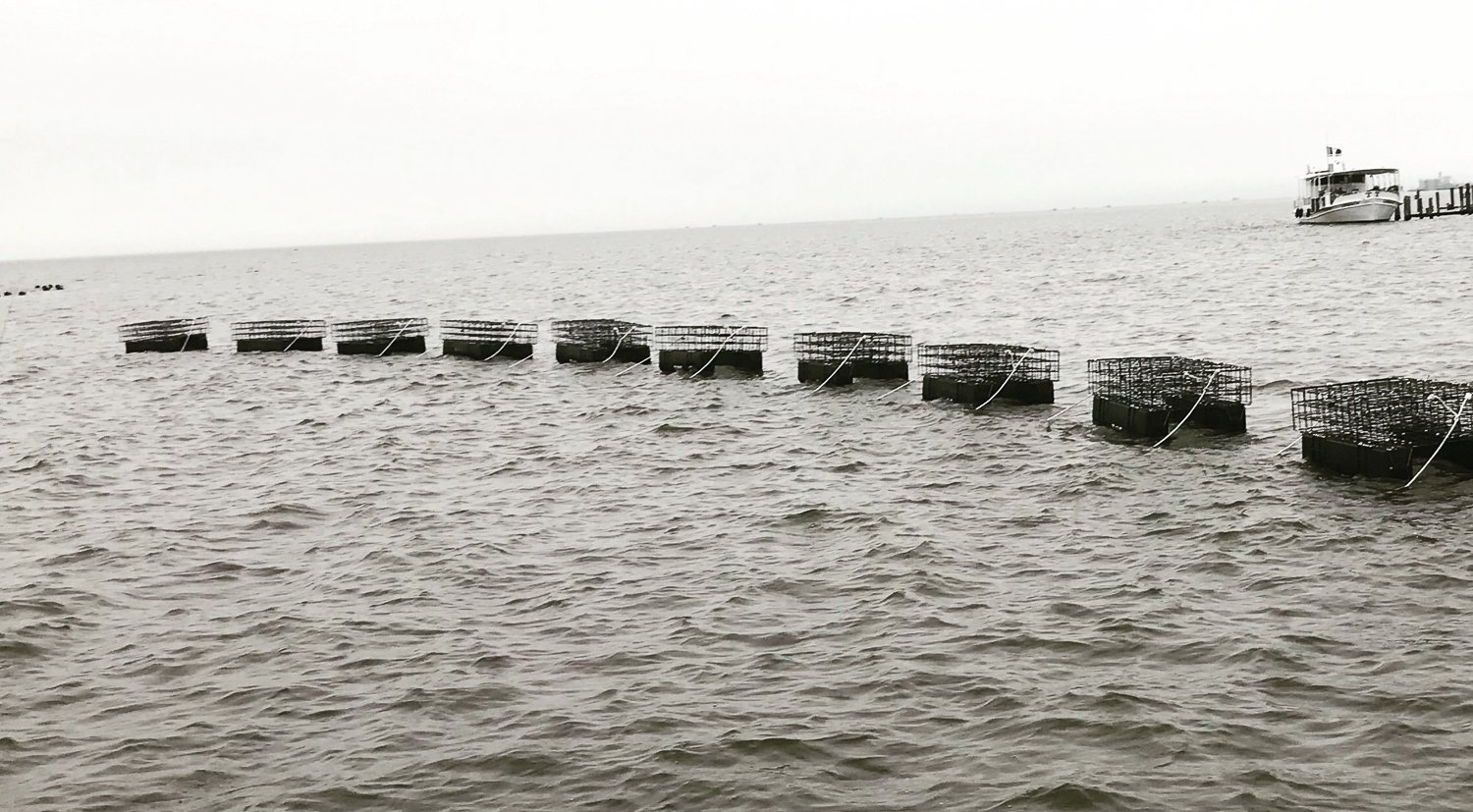Farm Fresh ~ Tesvich Oyster Farms
FARM FRESH: GETTING TO THE MEAT OF SOUTHERN OYSTER FARMS
In the oyster industry, there are several camps currently co-existing: wild harvesters, bottom culture growers and the newer kids on the block, the off-bottom oyster farmers. Tony Tesvich has one foot in both the bottom and off-bottom worlds, and with Tesvich Oyster Farms, he’s forging a link between the two.
Tony is not new to oystering: He been hands-on in the business of bivalves since 1986, doing traditional bottom culture. He turned to cage growing (both floating cages and some that are just a few inches off-bottom) after a devastating season at his bottom leases in Louisiana’s Barataria Basin.
“We suffered some big losses in 2019, so I decided to try cage farming that May,” he says. “I considered it a viable option and a good addition to what I was already doing. I got my son involved – he’s a huge help – and got some seed.” And yet, he’s already discovered that off-bottom farming is not without its own perils. “We got a good start, and then two hurricanes hit us,” he says. “We found out the hard way that these storms wreak havoc on the cages. I know everyone deals with hurricanes, but here in Louisiana, we seem to get slammed.”
The damage set him back; his off-bottom operation currently represents about 10 percent of his business. Tony’s still in the process of getting fully permitted as well. But several aspects of cage farming have him motivated to keep going and growing. “I love the quality of the oysters grown off-bottom. They grow fast and uniform. They’re meaty and salty,” he says.
Tony also believes off-bottom growing provides a positive future for the industry. “I see it as something the entire industry may turn to, may have to turn to, if the conditions that threaten the old ways persist,” he says
Plus, he’s having fun. “The off-bottom crowd is an engaged and positive community that I’ve found very refreshing,” he says. “I’m really enjoying the interesting people and the conversations we have.”
Some of those chats and other interactions have given Tony brand new insight into the creatures he’s been working with for more than half his life. “Since I got into aquaculture three years ago, I’ve learned more about oysters than in the previous 30 years I’ve worked the water,” he says. “And this knowledge is benefiting by bottom culture too.”
He's getting an education on the “off-the-water” work that off-bottom oyster aquaculture requires as well and having a good time doing it. “I realized I was going to have to get into marketing these things; the extra cost and extra labor mean I need to get more per oyster than I do for my bottom oysters,” he says. So, Tony created his Candy Oysters brand, and these treats have gotten a sweet reception. “The name is catchy, and people ask for them,” he says. “The branding part of this has been entertaining. I like doing our Instagram,” he says. He’s working on website now and hopes to offer online ordering soon. Building his marketing skills is paying off across the board. “The off-bottom pushed me to get creative, so now I’m branding my entire business,” he says.
And Tony stresses he’ll never give up his original bottom business; it’s his bread and butter, and he enjoys the variety. “Our bottom has bounced back after that huge loss, so I’ll not stop that,” he says. “And I want to continue and expand the off-bottom.”
While he’s is optimistic about success as he combines the best of both oyster worlds, Tony expressed concern about an issue specific to Louisiana, one that’s threatening all oysters in the area — a large influx of freshwater if some of the Mississippi River’s flow is diverted as is planned in coastal restoration efforts. “Freshwater diversion is a big deal for us, and the problem is, the folks addressing it aren’t really listening to those of us who work on the water,” he says. “We need a voice down here, a voice that someone will heed. I am worried about the future of oysters here overall.”




